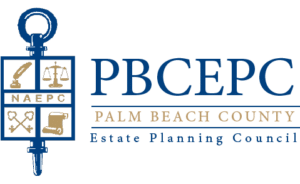 Private Placement Life Insurance (PPLI) products are fast becoming the strategy of choice among affluent investors drawn to the potentially high returns of alternative investments with high turnover rates—but who don’t want to be slammed by their equally supersized tax bite.
Private Placement Life Insurance (PPLI) products are fast becoming the strategy of choice among affluent investors drawn to the potentially high returns of alternative investments with high turnover rates—but who don’t want to be slammed by their equally supersized tax bite.
Here’s why: Every trade a hedge fund manager makes, for example, can lead to a capital gains distribution for individual investors—and if the asset was held for less than a year, it’s taxed at ordinary income rates. That means the typically high turnover rate of an investment like a hedge fund can generate a serious tax hit at higher income levels, where combined federal and state income and capital gains taxes can easily approach 50 percent in some jurisdictions.
By holding those assets in a properly structured PPLI policy, people in high tax brackets can reap the rewards of premium investment products while deferring or eliminating the associated taxes.
PPLI is a customized version of variable universal life insurance that’s able to hold interests in a variety of asset classes not available in traditional policies, including hedge funds, funds of funds, private equity funds, real estate investment trusts, and other alternative investments. By wrapping these assets into an insurance structure, PPLI can transform highly inefficient taxable assets into tax-efficient investments.
Here’s how PPLI works
As an unregistered security, PPLI is not available to the general public: PPLI is only available to those who meet the SEC’s accredited investor and qualified purchaser standards, have significant investable assets, high income levels, and a documented investment track record. Typically PPLI can be structured with a minimum of $1,000,000 of premium; however, it is generally considered that $5,000,000 is the minimum amount to “move the needle” and justify setting it up.
PPLI is generally structured with the minimum Death Benefit possible in order to meet the definition of life insurance and its tax treatment. So, although PPLI has a Death Benefit, it is typically used to achieve greater net returns on tax-inefficient alternative investment strategies. Unlike traditional life insurance, the PPLI Death Benefit is low relative to its Cash Surrender Value.
Like traditional variable universal life insurance, investments within a PPLI policy grow and compound tax-free as long as the policy remains in force. Withdrawals or surrenders have the potential to generate ordinary income if structured improperly, but savvy investors can tap into a policy’s cash value tax-free in two main ways: limiting withdrawals to the amount of their investment in the contract or borrowing from the policy through low-cost policy “wash” loans.
Investment returns inside of PPLI grow on a tax-deferred basis during lifetime. Assuming the policy is maintained for life, returns are paid out through the policy’s income tax-free Death Benefit. If PPLI is owned by an irrevocable trust, policy proceeds will be free not only of income tax, but also free from estate tax.
7 significant benefits of PPLI investments
- Tax-inefficient assets in a tax-efficient structure. Policyholders exchange tax friction for the additional expense imposed by the PPLI structure. Generally, the cost of PPLI is far outweighed by the income tax that would have been imposed on the returns generated by the alternative investments.
- No surrender charges. PPLI policies do not contain Surrender Charges or impose any additional illiquidity from the underlying investments.
- Tax Efficiency for Grantor Trusts.Wealthy people have taken advantage of increased gifting capacity created through the Tax Cuts and Jobs Act by making large gifts, often to “Grantor” trusts. The tax liability on investment returns inside of Grantor trusts inures to the Grantor—the person who made the gift. PPLI is a terrific tool for immunizing the Grantor from income tax liability created by alternative investments held by Grantor trusts.
- Fully transparent, institutional pricing structure. PPLI policies have a pricing structure that breaks down details of all policy fees, providing complete transparency to all loads and expenses.
- Lower costs. PPLI products usually involve lower fees, commissions, and costs than retail insurance products.
- No Schedule K1. Since the life insurance company is technically the owner of the LP interest of the alternative investment, the policyholder is no longer in the familiar position of waiting on K1s and filing taxes on an extension.
- Protection from creditors.This varies by state, but PPLI can enhance creditor protection in comparison to owning the alternative investment outright.
Private Placement Life Insurance & Annuity programs: Not your standard insurance policy
Life insurance comes with significant tax advantages, but traditional registered life insurance products do not contain the hedge funds, funds of funds, and other alternative investments ultra-wealthy investors often demand to meet their investment needs. Properly structured PPLI policies combine the powerful tax benefits of life insurance with the financial advantages of hedge funds and other alternative investments.
Colleen Rhodd leads the Life Insurance planning division of Lindberg & Ripple’s Florida office. Lindberg & Ripple is an independent investment and insurance advisory firm providing innovative Insurance Solutions for wealthy families, successful executives, and business executives. We can help your family or business achieve your financial objectives while minimizing hassle, expense, and taxes.
